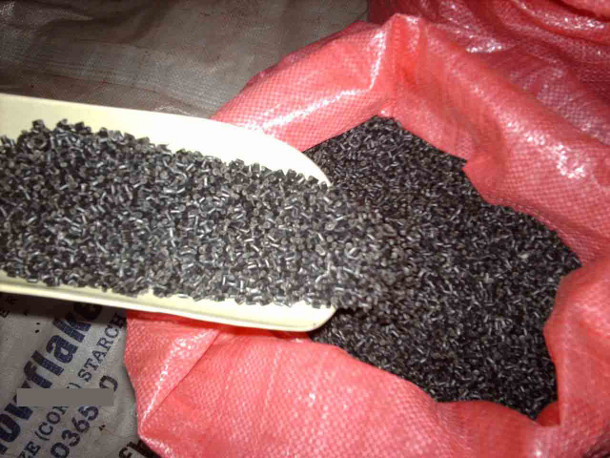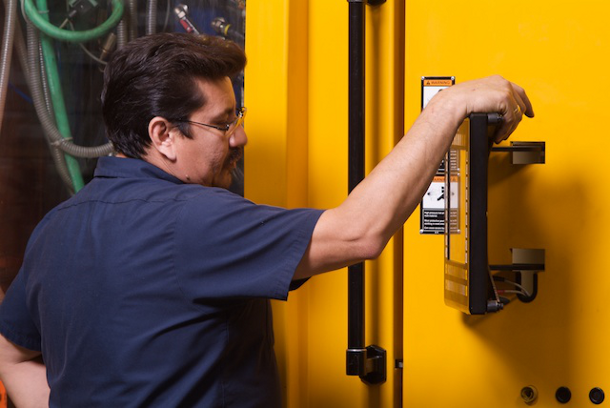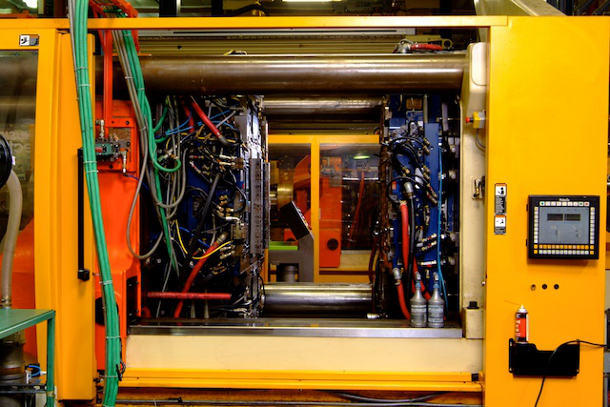
Polypropylene pellets. Image via hwitc.com
We spend a lot of time at DeepRoot talking about the big picture of “green infrastructure,” but in order to assist in creating viable and sustainable urban eco-systems, we must actually produce products. Plastic products.
Working here, I sometimes giggle thinking about the scene in “The Graduate” where Mr. McGuire gives Ben (Dustin Hoffman) some insightful advice in one word – plastics. But let’s be honest, don’t most of our eyes sorta glaze over like Dustin Hoffman’s did when the word plastics comes up?
DeepRoot uses two major plastics in almost all of its products – polypropylene (PP) and polyethylene (PE). But have you ever wondered why we use one over the other in our root barrier? I think it is helpful to understand where plastics even come from before delving into why they are used in certain processes.
Historically, all plastic resins have been made using petrochemical feedstocks such as natural gas or crude oil. Recently, some resins have been made using organic feedstocks like natural starches or sugars (corn and sugarcane); but the volume is still very low and the pricing is high.
Currently, using petrochemical feedstocks via natural gas is the least expensive way to make the largest volume resins. In very simple terms, natural gas is composed of primarily a mixture of propane, ethane and methane gases from these gasses (to put it very simply) different resins are produced. Polypropylene (PP) derives from propane, polyethylene (PE) from ethane, and polystyrene from methane.

PE and PP are the highest-volume, lowest-cost materials with relatively good and usable physical properties. Also, because of their abundance, there is high availability of both in reprocessed condition. Reprocessed typically means “recycled” material, but not necessarily only post-consumer. It could also include post-industrial material, which typically comes from plastic processing plants and is likely material that did not make it to market – like a short shot (imagine when you are trying to take that perfect picture of your cat, but the head does not make it into the frame – that’s a short shot).
DeepRoot manufacturers its root barriers in two ways, with two types of plastics: for injection molding we use PP and for extrusion we use PE. For a quick primer on injection molding versus extrusion, let me borrow from Wikipedia:
Injection molding is the process by injecting material (in this case – plastic) into a mold. For every positive space you see on a part (so the part itself) there is a negative space in the mold. Extrusion is more like when you write happy birthday on a cake.
Extrusion is the process used to create objects of a fixed, cross-sectional profile.
The 36″ and 48″ root barriers are so large that injection molding is not the most efficient or economical choice. So they are extruded, and for that process PE is the appropriate plastic. Because the profile is filed and one directional, our 36″ and 48″ root barriers do not have a double topped edge or ground locks like the 12″, 18″ and 24″ do.

For injection molding, the physical properties of the PP make it the superior choice. PP tends to be a bit stiffer than PE and actually molds without distortion. In fact, we did try molding PE under the same conditions, but the finished product looks something like, I believe the official term, a potato chip (meaning that it was warped due to uneven shrinking). Based on its good moldability, relatively low cost, availability, and acceptable properties, as well as the fact that PP has very good resistance to alkalies and acids found in soil, PP is the choice for our injection molded parts.
Well, there is your crash course in plastics and why we use different materials for different manufacturing processes. Exciting, right?
One more important thing to know is that our 36″ and 48″ root barriers are made from entirely 100% re-processed PE, while the 12″, 18″ and 24″ root barriers are all made from 75% (increased just last year from 50%) re-processed PP. Both are completely recyclable. The Geomembranes are made from 100% Post-Consumer PE. And ArborTie is made from woven polypropylene (what, PP can be woven? That sounds like another blog post) or polyester.
Rebecca Stevens is DeepRoot’s Director of Operations. Thank you to Don Ashleigh for your contributions to this post!






Leave Your Comment